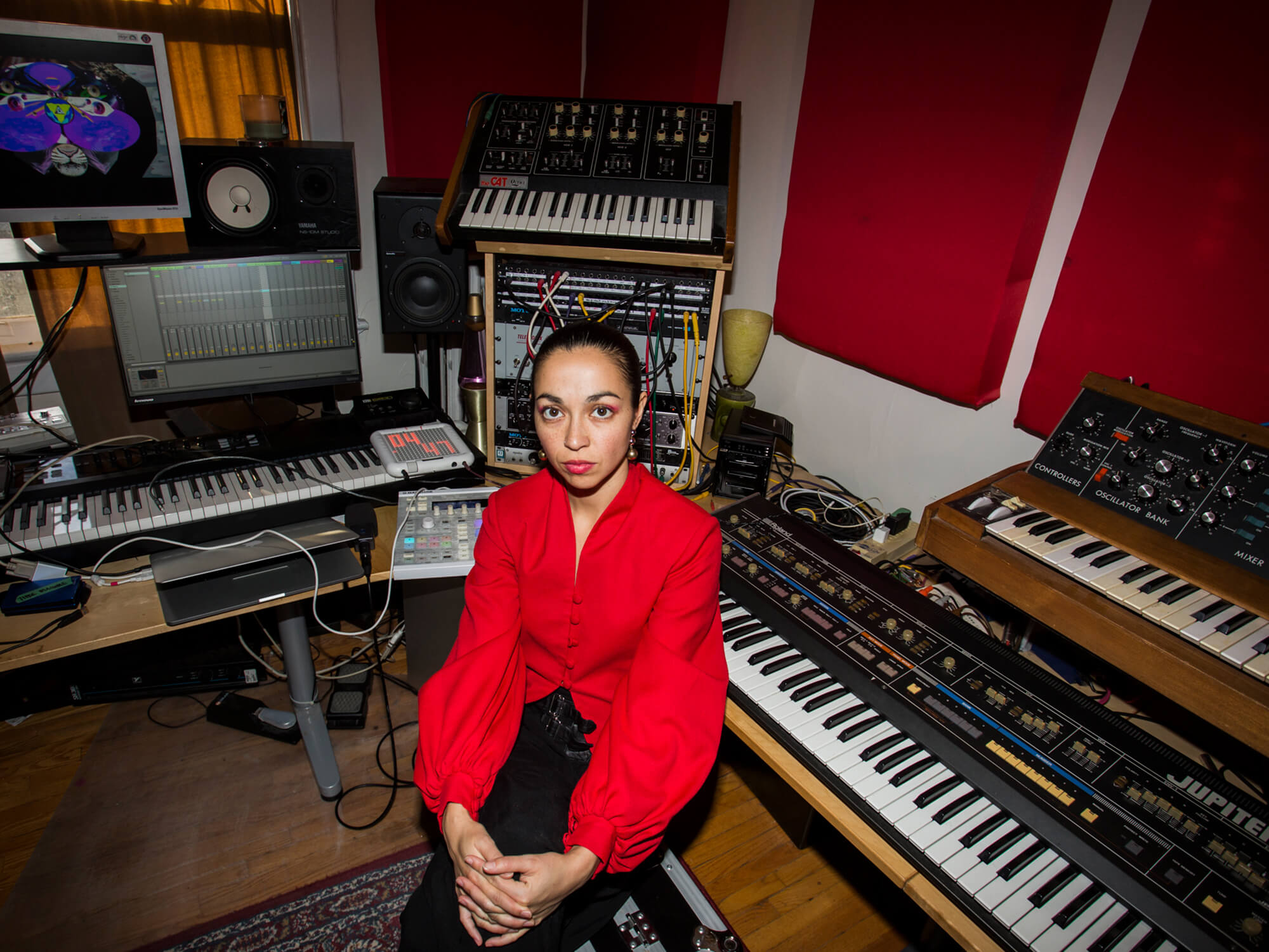
Show Off Your Studio: Maylee Todd’s LA studio is a multimedia psychological safety zone
Stones Throw signing Maylee Todd shows us around her Los Angeles studio following the release of her album, MALOO.
Image: Joe Fuda
Maylee Todd is part human, part AI projection from another dimension. From motion capture and 3D modelling to a Virtual Womb complete with giant vulva, ceiling projections, dancers and performance art, the Canadian-born, LA-based artist’s creative world hums with explorative multimedia and technology – not to mention excellent electronic music.
- READ MORE: Show Off Your Studio: Chrome Canyon creates cinematic soundscapes from his California synth haven
Todd’s latest album, MALOO, is a concept record built around a self-created avatar of the same name. Like much of Todd’s music, it deals with themes of identity and mental health, held in tension between a beckoning technological horizon and the internal need to nurture the self. “The album MALOO takes place in the age of energy where species communicate through frequency,” she explains. “MALOO – part AI Avatar and part human Maylee – has their own challenges with identity; breaking up with parts of themself and showing vulnerability before identification while travelling to conscious programmable planets.”
We catch up with Todd in her new studio space, where she explains her plans to expand its facilities for body tracking, her fondness for the Yamaha Tenori-on, and why she would take a Paraguayan harp to a desert island.
Hey Maylee! You’ve said that you have a keen interest in story-telling and ‘science-fiction lullabies’. Can you tell us a little about what that means for your music?
This album, MALOO, speaks on topics like mental health, self-awareness and identity, which can be challenging. Delivering these topics through the gentle form of lullabies creates an open and vulnerable place for these concepts to live, hopefully destigmatising topics around mental health.
Many of the soundscapes on Maloo are reminiscent of 1990s Japanese video games like Zelda. What draws you to that world?
I love video games – the textures and the feeling of nostalgia when I hear these sounds. The record was built on a Tenori-on, and its creator Toshi Iwai made video games before he collaborated with Yamaha to make the Tenori-on.
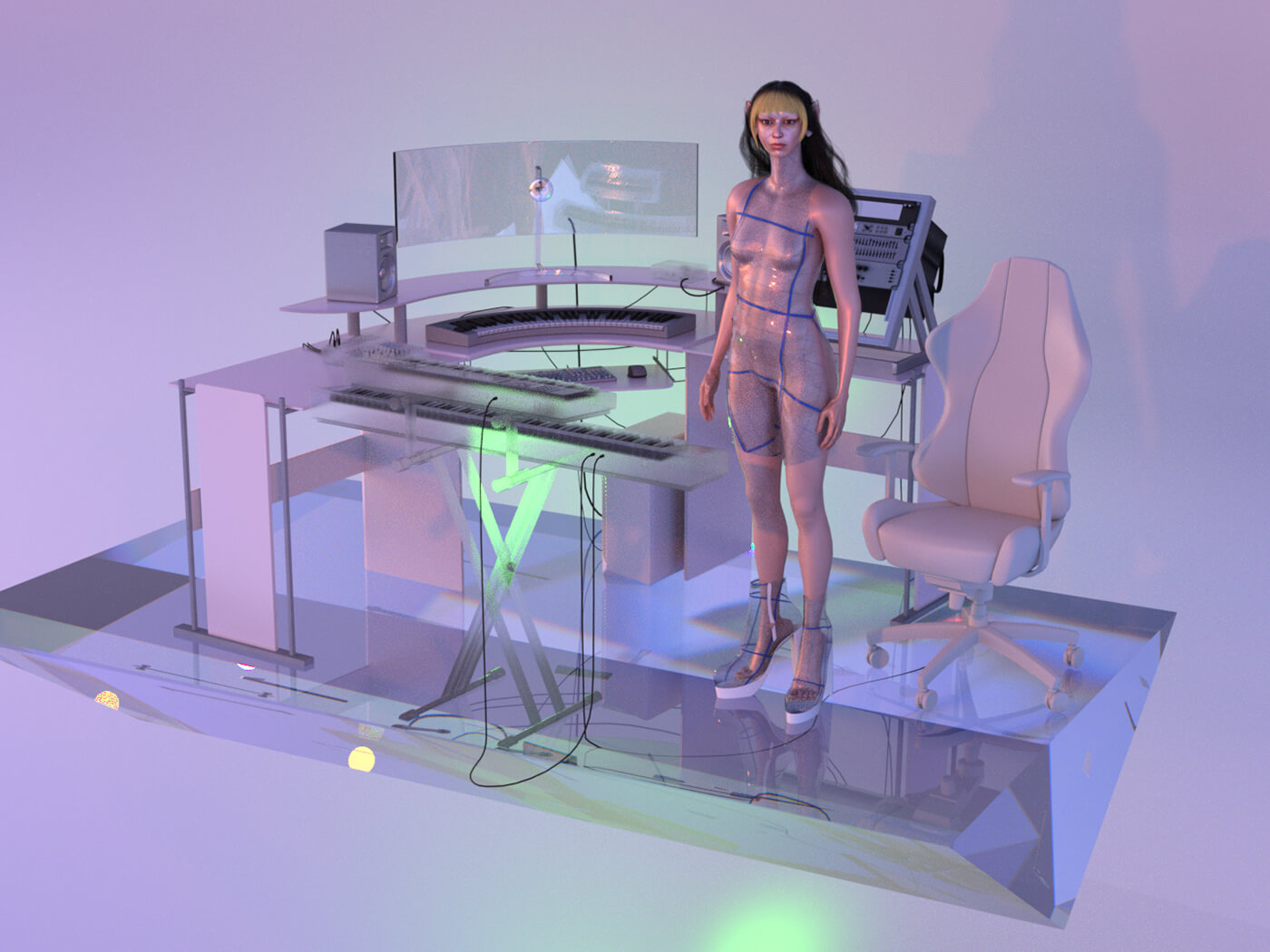
You’ve also released music on Japanese label P-Vine in the past and charted on Billboard Japan. Can you tell us a little about that cross-cultural dialogue?
Yes, the Japanese success was quite a surprise to me. There was a remix of one of my tunes and it took off in the underground funk scene. P-Vine then expressed interest and I signed with them. I didn’t actually know how well it was doing until I went to Japan, had a stacked schedule with PR and my shows were all sold out. It was an incredible experience and I am forever grateful!
Tell us a bit about your studio, Maylee.
I recently moved to Los Angeles so my studio is lacking a bunch of gear. I’ve only been in my new place for about a month. My Virtual Womb HQ studio in Toronto was about 3000 square feet, with multiple projectors, a geodesic dome, synths, unicorns, and stringed instruments.
That space was ready for any type of media experience. I also ran DIY shows out of that space. My new space is slowly being built back up, with synths and a great media station for testing projections and live body tracking.
How do you use your studio?
The recording process is different for every project. For this MALOO record, it was during the pandemic– I wrote and created the songs in the Tenori-on, wrote the lyrics to the tunes, and sent the project files to [co-producer] Kyvita who then added their own.
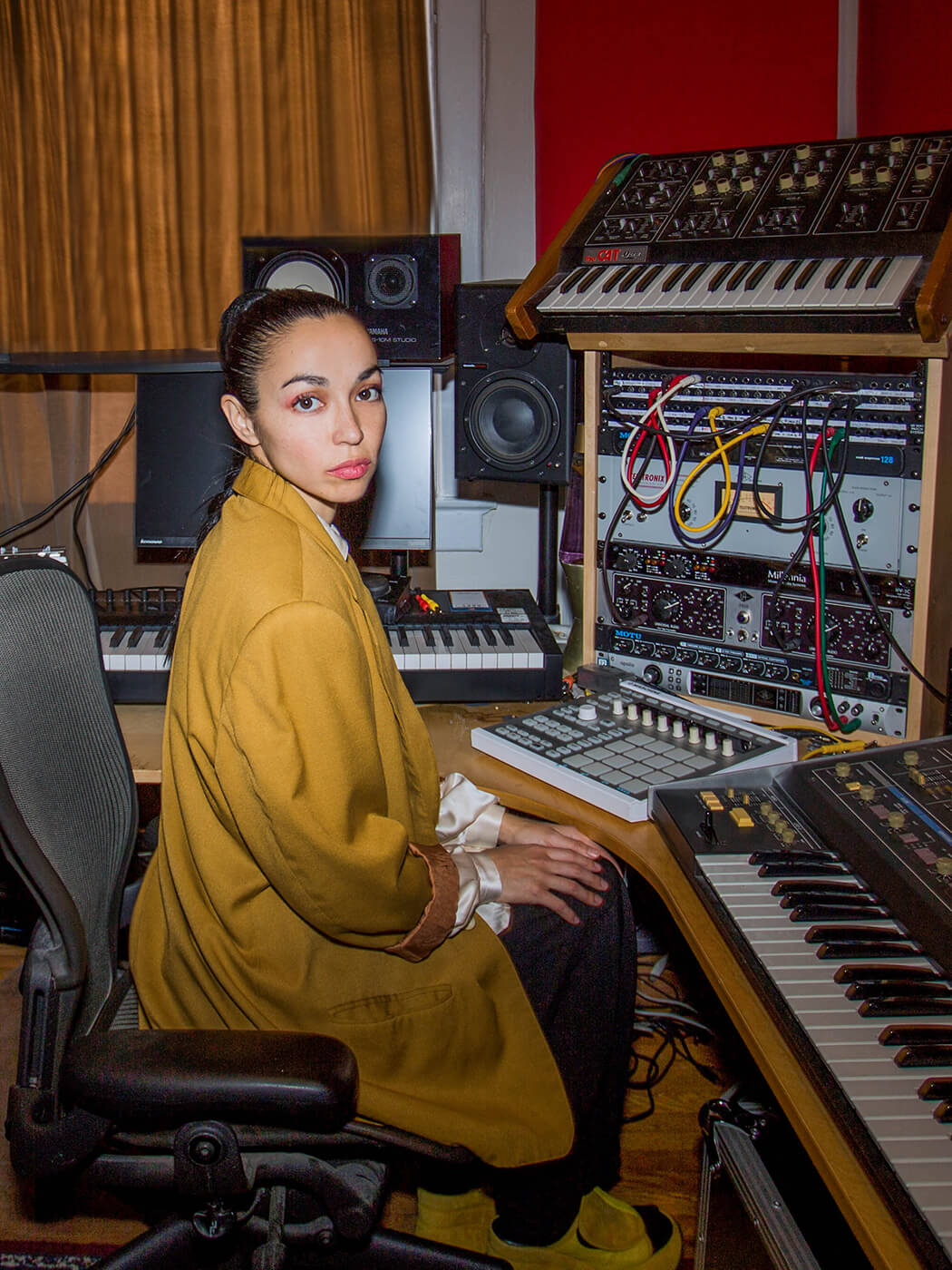
What atmosphere do you try and create in the studio? How does the studio environment help you with your creativity?
In the studio I think I need psychological safety. I want to be able to sing, create, to cry, in a quiet, non-judgement zone. I wanna say words like jimmy jammer, tra la la, garbage toe! loud and proud without judgement. Let that freak flag fly for the process!
Which DAW do you use and why?
I love Ableton. It’s extremely versatile and I can pair visuals with my set tracks. Everyone uses Ableton in so many cool different ways so I love meeting other users and seeing how they integrate Ableton into their process and live set.
What is your favourite piece of gear and why?
I love my Tenori-on. It’s such a compact little instrument that has its own unique sounds, and its limitations are also a huge benefit in that I’m forced to find creative ways to use this synth.
What synth or effect can be heard the most on your new release?
The Tenori-on! It was a huge component in creating this record. It was made by multimedia artist and video game designer Toshi Iwai. He collaborated with Yamaha and made a run of these incredible little synths. I also believe my co-producer Kyvita added a lot of his textures and style to the recordings. He spends a lot of time curating his textures, and his groovy basslines and flourishes add more depth to this record.
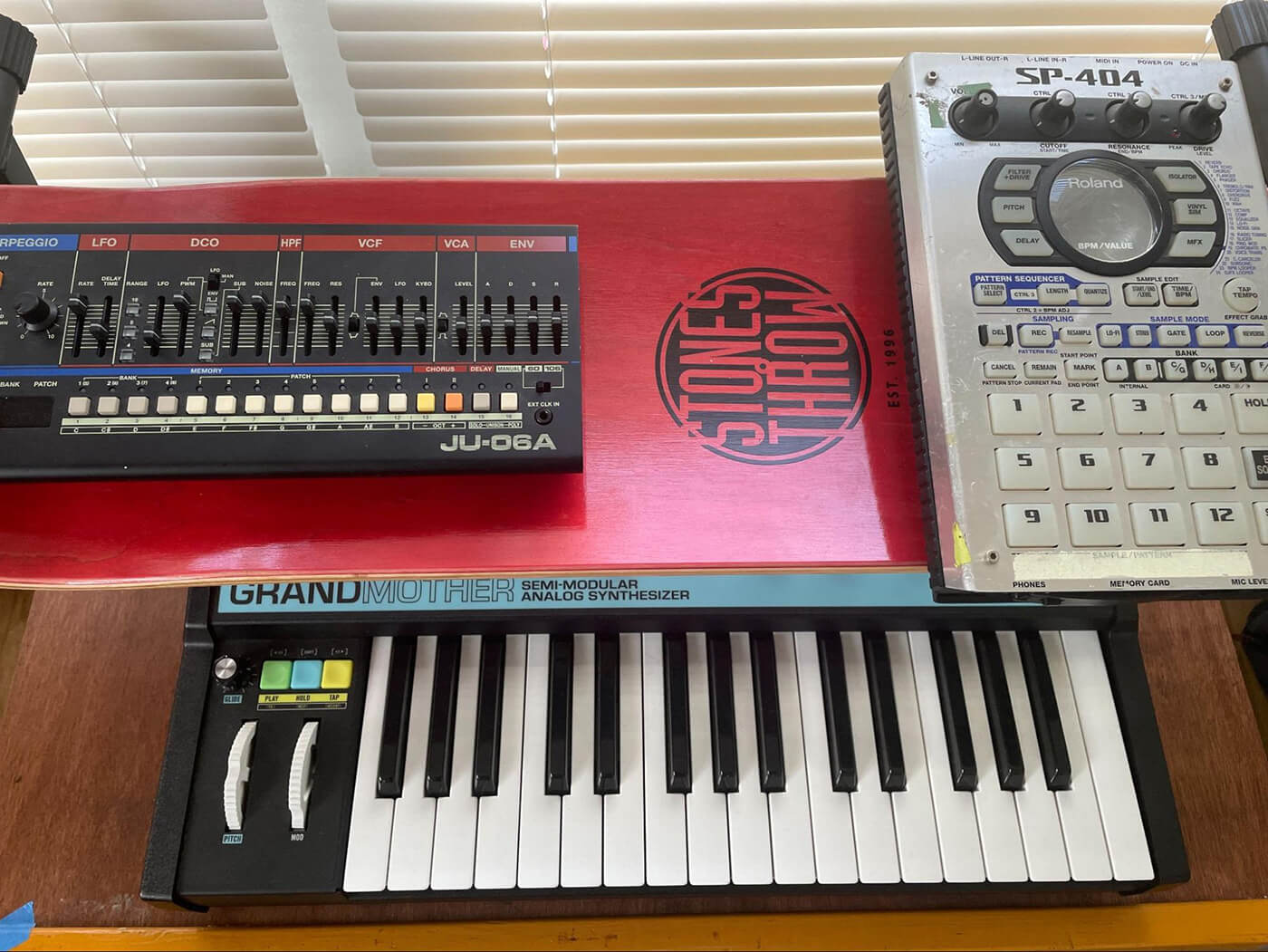
Is that a life-size purple statue of a horse we see!?
Yes, that’s a unicorn I was commissioned to paint for PRIDE in Toronto.
What’s been the biggest investment in your studio? Was it worth it?
The biggest investment in my studio would probably be my PC Alienware Area-51 R2. It’s one of the first desktops to punch real hard in the 3D modelling department.
You’ve been working as composer and music producer on the show Workin’ Moms for CBC and Netflix. How did you get involved with that? How do you find making music for the screen?
I got the gig through a dear and talented friend of mine, Peter Chapman. He’s got loads of experience and we work super well together, so it was a no-brainer to take the job. The show is super fun to work on and Catherine Reitman is a super-dope, badass human!
What is next on your shopping list, studio-wise?
I really want a harp. It’d be dope to have a pedal harp. They’re so sick, dreamy and I can have more versatility with playing. Currently I got a little Celtic harp.
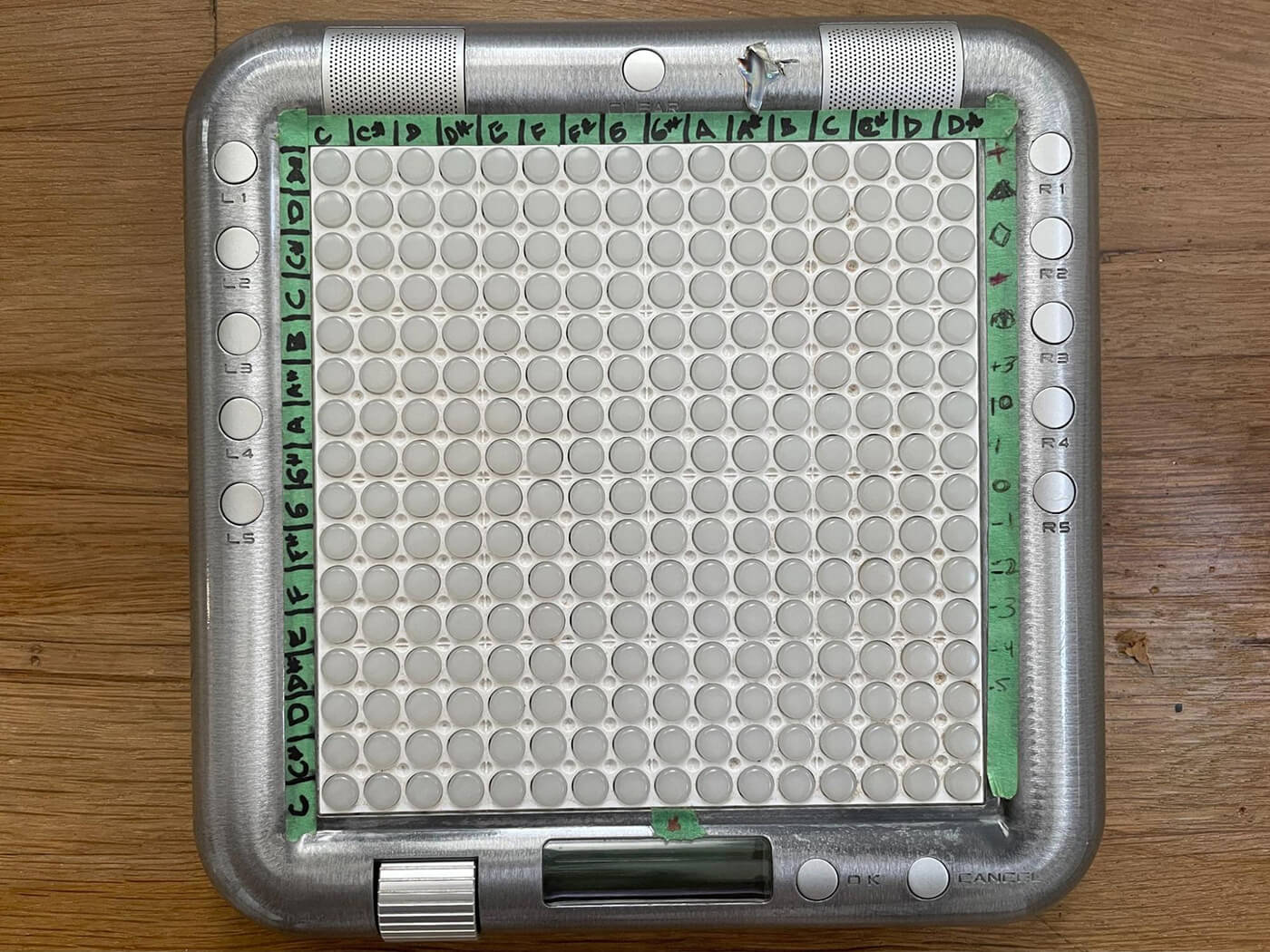
What is your dream piece of gear?
I’d like to build a big Tenori-on, or co collaborate on a MIDI controller that is specific to my needs. I love a visual and intuitive piece of gear. I believe the future of music is integrating all forms of art and to have a piece of gear that can accommodate that would be amazing. I’d love a hand in designing that.
If you were left on a desert island, what one item would you take with you to make music with forever?
Tough one. It’d either be my classical guitar or harp. It’d be sick if I had an orchestral harp or a Paraguayan harp. I used to have a Paraguayan harp because I love Brazilian classical guitar and the harp; so this is the perfect blend of the two – groovy and melodic!
You’re no stranger to using cutting-edge technology to create art. Where, for you, is the intersection between technology, art and music?
That line changes a lot for me; it’s all expression, it changes with my interests and priorities. I believe I’m quite curious and love to explore many different mediums – whether I’m gonna use it in my practice or not. I love to learn and I’m extremely grateful to have a passion for new things paired with a beginners mindset.
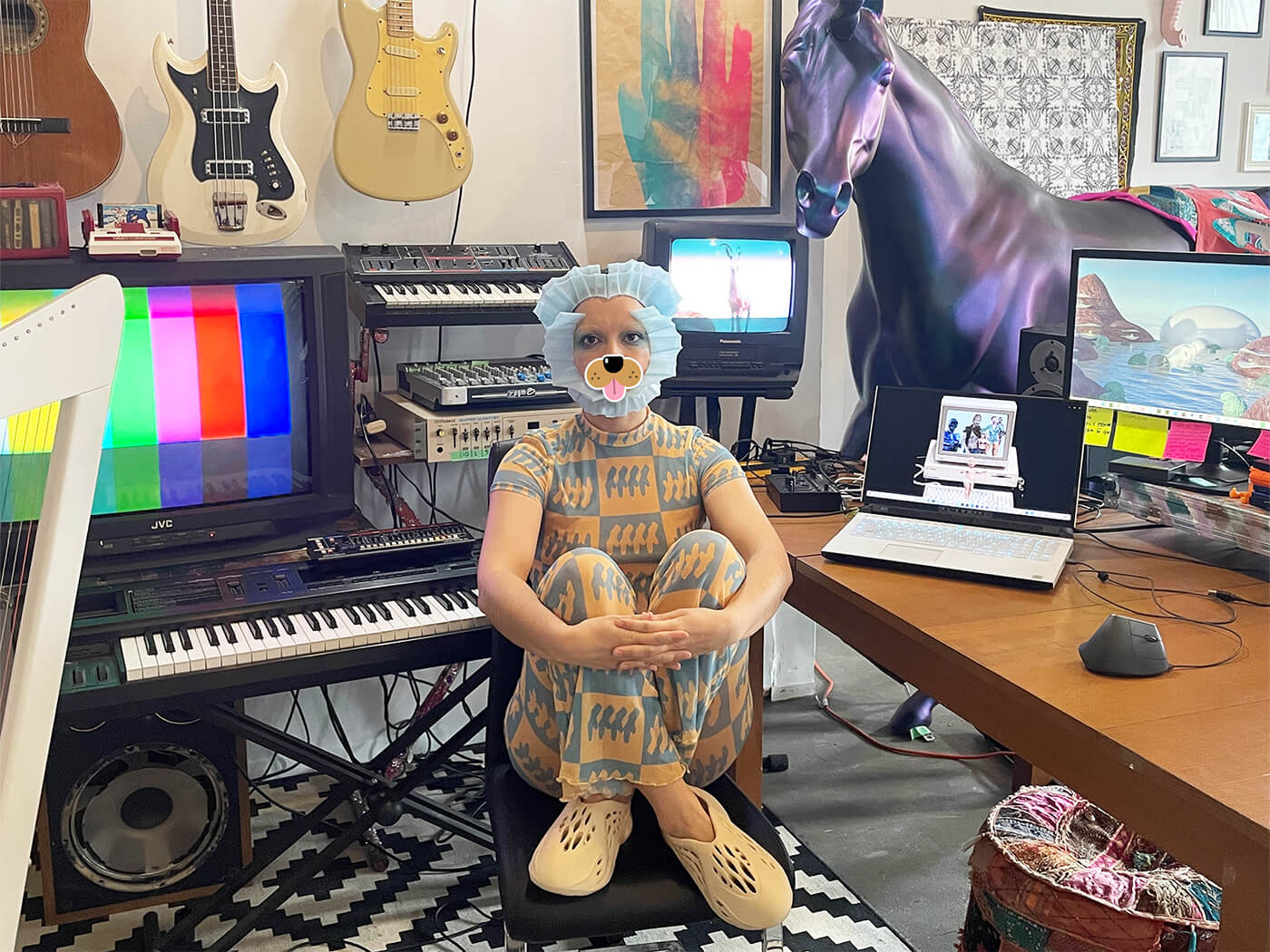
Do you have any frustrations with your current set-up?
[Laughs], well this is totally gonna negate what I just said, but I can definitely get hella frustrated with tech. I’m live motion-capturing my face to a 3D avatar while running environments, commercials and music software, all while playing and singing live.
The multitasking isn’t too bad, that’s kind of fun, to be honest. But the software can get real spotty, specifically Ableton Live and PC integration with multiple DAWS open running 3D video and live-tracking. I’m still figuring out what the most ideal situation is for this.
What is your top piece of production advice?
Don’t worry about it being technically perfect – whether that’s in theory or about having the ‘perfect’ sonic design. Start by creating work that makes you feel good. Of course, expand your skillset and knowledge, but always remember to believe in what you’re doing and that there will always be an audience for it.
What is the one piece of advice you would give someone starting out building a studio?
Find a piece of gear that you can use, enjoy, and that’s not overwhelming. Sometimes, we need to slowly open the window of tolerance before overwhelming ourselves when it comes to learning new gear, so make it manageable and fun.